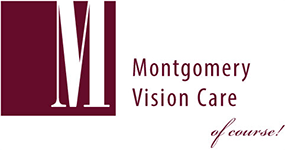What you can do if you suspect you’re suffering from CVS
Are you feeling eye, neck and back strain at the end of every day?
Do you feel like your eyes are tired or dry after being in front of your computer screen for a few hours?
Today we humans are working in ways that are vastly different than our predecessors. Americans now engage in more “non-voice” activities on mobile devices such as tablets and cell phones than in front of a TV. These hours are in addition to those spent in front of your computer screen at work or home.
Did you know that when we look at our screens we actually blink less?
Did you know that neck and back problems are often attributed to looking at your computer at the wrong angle and distance, which can create strain and cause dry eyes?
No wonder our necks and eyes hurt!
Did you know that a consultation with your Eye Care Provider could alleviate some of the pain caused by all this screen time?
There are lenses specifically designed for working at computer screens, and can bring great relief to your eyes, neck and back. Some lenses we have prescribed at MVC are the Hoya TACT™ and SYNC™ lenses, Essilor’s Computer Lenses, and Shamir Office lenses. These lenses are designed to maximize your visual range and focus at arm’s length distances, providing a clearer viewing zone up to 5 times larger than conventional eyeglass lenses.
Traditional Progressive lenses have a very small Intermediate range—that’s the area of the lens we use to look at objects about an arm’s length away—the typical distance to our computer screens. The Computer lenses are designed to widen and deepen that area providing an expanded viewing area, and bring relief to tired eyes!
These lenses are best paired with a high quality anti-reflective and blue light blocking coating to diminish glare from overhead lights and prevent damage from blue light. HOYA Recharge™ and Essilor’s Crizal Prevencia™ are two great products that will help reduce Computer Vision Syndrome. Both of these products work to selectively filter out harmful light (Blue-Violet & UV), allow beneficial light to pass through (visible light, including Blue-Turquoise) and maintain excellent transparency (clear No-Glare lens) for optimal vision at all times.
Gather some information to share with your Optometrist and Optician:
- Do you stand or sit at your computer work station (or a combination of both)?
- Is your computer a desktop or laptop?
- Are you able to tilt the screen, adjust the distance from which you view the screen, raise and lower the screen?
- Do you use Multiple Screens (Dual Displays)?
- How far are you from your screen (don’t guess- actually measure this with a measuring tape)?
- What brightness level is your monitor on and what is the lighting like in your work space?
- What is the average time you spend on your computer daily?
- Do you stare just at the screen, or are you moving your eyes between documents and the screen?
- Do you find your eyes getting dry quickly?
- Do you take antihistamines or other medications that might dry your eyes?
If armed with the right information, you can provide a complete picture of your working day. This information is critical to your Optometrist’s diagnosis and treatment of Computer Vision Syndrome. With the proper eyeglasses and some adjustments to your workspace, CVS can be a thing of the past!




